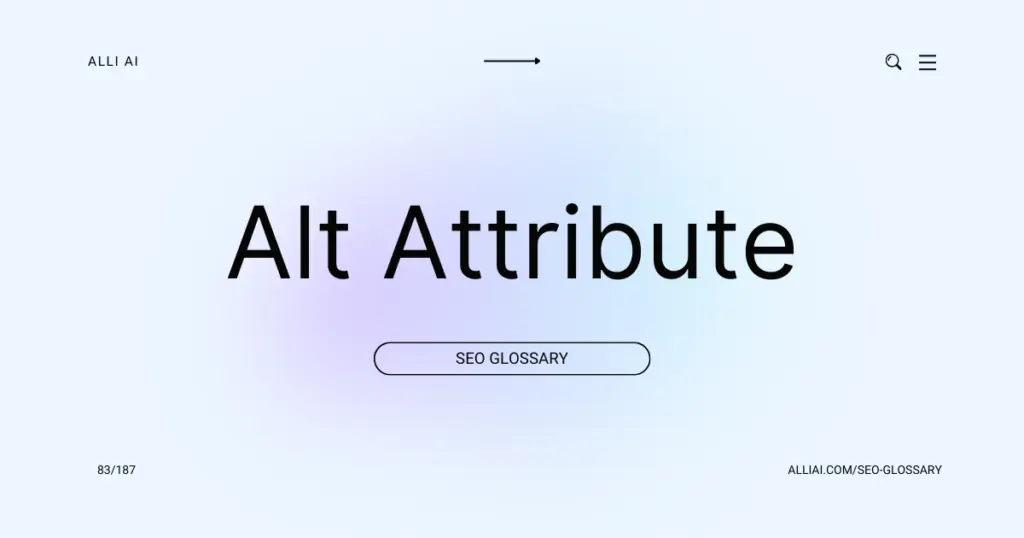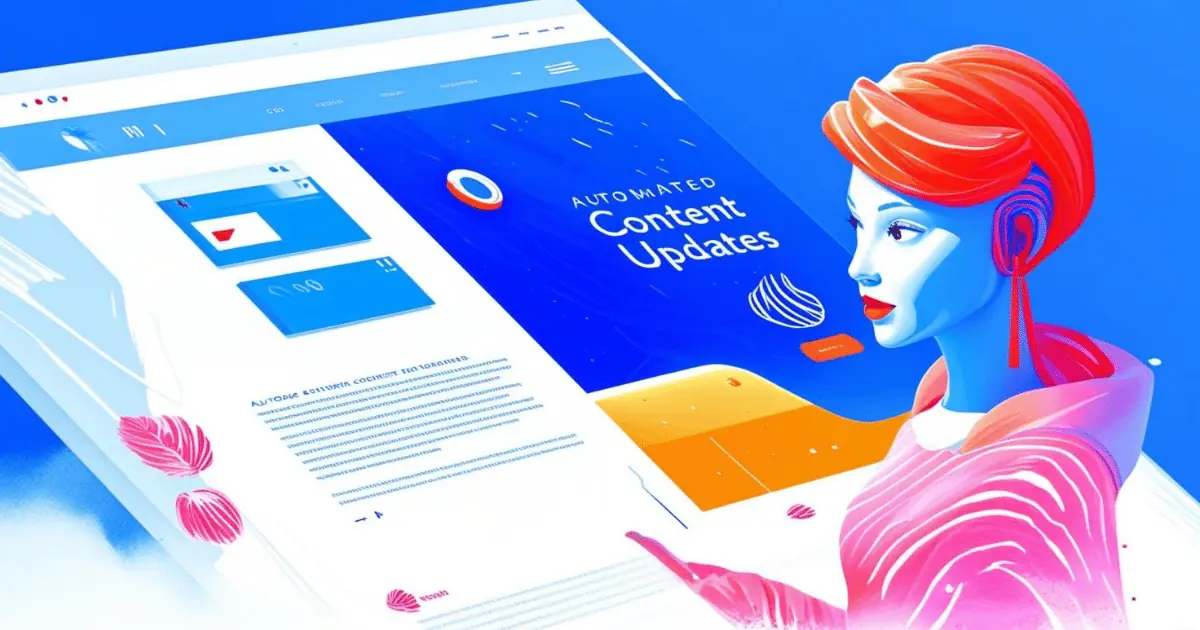What Does Alt Attribute Mean?
The Alt attribute is a text description added to an image’s HTML code that helps search engines and visually impaired users understand what the image depicts.
Where Does Alt Attribute Fit Into The Broader SEO Landscape?
The `alt` attribute, also referred to as “alt text” or “alt tags,” is primarily used in HTML to describe the appearance and function of an image on a webpage. From an SEO perspective, it serves several important functions:
1. Improving Accessibility: Alt text helps screen readers used by visually impaired users to interpret images, making your site more accessible and improving user experience. Search engines favor websites that provide a good user experience.
2. Enhancing Image Search Optimization: Alt text provides search engines with context about the content of an image. Well-optimized alt text can help images rank better in search engine images results, thereby driving more traffic to your site.
3. Contextual Relevance: Alt text helps search engines understand the context and relevance of the page content, contributing to overall SEO effectiveness. It is especially beneficial for keyword optimization but should be used naturally rather than stuffed with keywords.
4. Fallback for Missing Images: If an image fails to load on a webpage, the alt text will be displayed in place of the image. This ensures that a text explanation is still visible, contributing to uninterrupted user experience.
5. Indexing and Crawling: Search engines use alt text as a factor when indexing images and content. Correctly describing images using alt text can facilitate better crawling and indexing by search engines, which might improve the page’s search rankings.
In the broader SEO landscape, properly used alt attributes contribute to enhanced accessibility, context in content, image search optimization, and overall search visibility and rankings.
Real Life Analogies or Metaphors to Explain Alt Attribute
Imagine every image on a website as a wrapped gift, and the alt attribute is the tag that tells you what’s inside without having to unwrap it. This helps people who can’t see the gift to know what it is, just like it helps visually impaired users understand what’s being displayed when they can’t see the image.
Or consider a museum where each art piece is accompanied by a small plaque. The alt attribute acts like that plaque, offering a description when the painting itself isn’t visible, either due to a technological issue or because the visitor can’t see it.
How the Alt Attribute Functions or is Implemented?
1. Image Tag Addition: The `alt` attribute is used within an `` tag in HTML. For example: `
 `.
`.
2. Descriptive Text Entry: When using the `alt` attribute, a concise description of the image is placed within the quotation marks of the attribute. This description should accurately represent the content and function of the image.
3. Accessibility Support: Screen readers use the text within the `alt` attribute to provide a verbal description to visually impaired users. This text helps users understand images on a webpage.
4. SEO Benefit: Search engines index the `alt` text, aiding in understanding the content of the image, which can enhance the relevance of the page for specific search queries.
5. Fallback Usage: If the image fails to load on a webpage, the `alt` text is displayed in place of the image, informing the user of what should have been there.
6. HTML Validation: Including an `alt` attribute in `` tags is a requirement for HTML standard compliance, ensuring that all images have a textual alternative.
Impact Alt Attribute has on SEO
1. Improves Accessibility: The Alt Attribute provides text alternatives for images, aiding screen readers used by visually impaired users, thus enhancing website accessibility which is a factor in SEO.
2. Image SEO: Alt tags help search engines understand the content and context of images, which can contribute to improved image search rankings.
3. Enhances UX: If an image fails to load, the alt text will be displayed, ensuring that the information intended to be conveyed by the image is still accessible, improving user experience.
4. Boosts Relevance: Properly used Alt Attributes increase the relevance of content for both users and search engines, potentially improving search engine ranking for related keywords.
5. Reduces Bounce Rate: By aiding in delivering a better user experience through descriptive text in alt attributes, websites might reduce their bounce rate, positively affecting SEO.
6. Compliance with Web Standards: The use of Alt Attributes is a part of web standards (e.g., WCAG guidelines), which can indirectly influence search engine rankings through better compliance and broader accessibility.
SEO Best Practices For Alt Attribute
1. Identify the subject and purpose of the image.
2. Use descriptive, concise language to explain the image.
3. Include relevant keywords naturally in the alt text.
4. Ensure the alt attribute explains the image’s context within the article or page.
5. Avoid keyword stuffing in alt text.
6. Provide alt text for all images, including decorative ones (use an empty alt attribute for purely decorative images).
7. Keep the alt text under 125 characters.
8. Use proper spelling and grammar in the alt text.
9. Test the alt text by disabling images in your browser to see if the content is understandable with the text alone.
10. Regularly update and revise alt text as needed to maintain relevance and accuracy.
Common Mistakes To Avoid
1. Overstuffing with Keywords: Avoid cramming keywords into alt attributes thinking it will boost SEO. Instead, ensure the text is relevant and descriptive of the image content.
2. Ignoring Image Context: Describe the image in context to the surrounding content instead of describing it in isolation. This makes the alt attribute more relevant to the page’s overall topic.
3. Using Generic Descriptions: Common, vague phrases like “image” or “photo” are not useful. Specific, concise descriptions that convey relevant information about the image are preferable.
4. Skipping Alt Attributes: Every image should have an alt attribute. This is not only important for SEO but also essential for accessibility purposes.
5. Writing Lengthy Descriptions: Alt text should be succinct. Ideally, keep it under 125 characters because screen readers can truncate longer text, rendering it confusing.
6. Not Using Alt Attributes for Decorative Images: If an image is purely decorative and adds no informational value, use an empty alt attribute (alt=””) to avoid distracting screen reader users.
7. Duplicate Alt Text: Using the same alt text for different images is not recommended unless the images are identical. Unique descriptions help improve user experience and SEO.
8. Missing Keywords: While overuse of keywords is discouraged, integrating important keywords naturally in the alt text can help with image search visibility.
9. Inaccurate Image Descriptions: Ensure that the alt text accurately reflects the image content to avoid misleading users and hurting the user experience.
10. Forgetting Audience and Purpose: Tailor the alt text to meet the needs of the target audience and the purpose of the image on the page, enhancing both accessibility and relevance.






